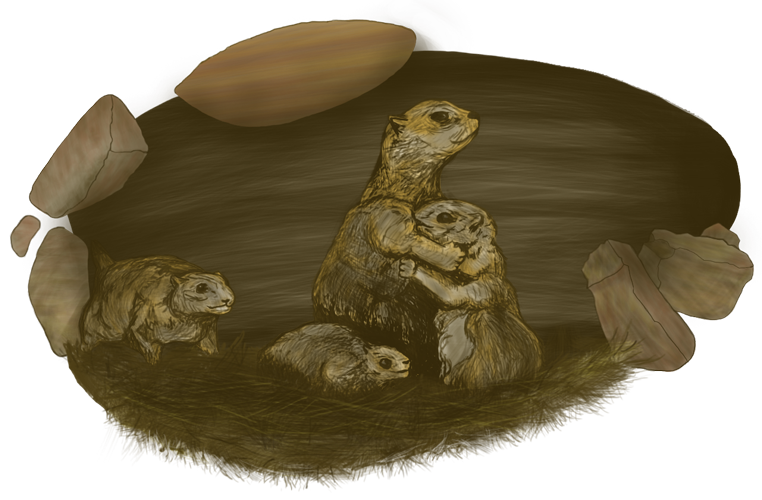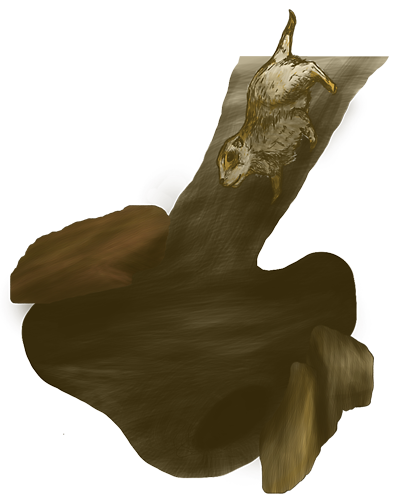Latest News and Events
If animals could talk: Former NAU professor works on dog translation device
By Emery Cowan
Originally Published Jan 24, 2018 by AZ Daily Sun | Link to Original

What if you could easily find out what your dog was barking about? Or what it was thinking when it cocked its head in a certain way? And what if doing so only required pointing a cell phone at your pet and then getting a translation of what it is trying to communicate?
That’s the vision of retired Northern Arizona University biology professor Con Slobodchikoff. After spending decades researching prairie dog communication at NAU, Slobodchikoff has turned his attention in recent years to animal communication and, more specifically, dog communication. His newest project is a dog translation device that could decode a canine's vocalizations, facial expressions and actions and then tell the human user what the dog is trying to say.
"The program would synthesize all of it, then tell the person the dog says 'I want to go for a walk' or 'you're scaring me, back off please,'" Slobodchikoff said.
The technology hinges on an artificial intelligence program that would learn to recognize animal sounds and actions through videos and pictures. Interpreting what an action might mean is done via the context of the situation, Slobodchikoff said. In a situation where a dog is frightened, for example, researchers would get video of its facial expression so the program can learn what happens when a dog gets scared.
So far, Slobodchikoff said he has received positive reviews of the idea. People like to think of their dogs as thinking, feeling beings and want to respond to them in some way, he said.
“But they don’t know what their dogs are trying to say to them," he said.
He also cites a statistic that between two million and three million dogs are euthanized each year for behavioral problems. Most of those problems arise because of a lack of communication between people and their dogs, he said.
“If people had some way of knowing what their dogs are trying to communicate to them, a lot of behavioral problems would be solved," he said.
A dog that keeps biting its owner, for example, could just be reacting to the owner unknowingly acting in an aggressive manner. A translation device could allow the owner to understand that.
On a more personal level, Slobodchikoff said the device is a response to the fact that a lot of people, including himself, like to talk to their dogs.
Last year, Slobodchikoff started the company Zoolingua to develop the animal communication technology. The timeline for developing a working translation device depends a lot on how much money he and his partners can raise to pay for the research that has to go into developing the program and things like data collection, Slobodchikoff said.
“If we get a lot of money we can do it in two to five years, not as much money then it probably will be 10 years,” he said.
He is soon going to launch a campaign to try to get volunteers to send in videos of their dogs that includes the context of the animals' actions to get material for the artificial intelligence technology. A video, for example, of a dog being aggressive toward another dog that contains some context “really helps us,” he said.
Once he perfects a device for dogs, he hopes to expand it to cats, horses, other domestic animals and, much further down the road, perhaps wild animals.
That would be particularly valuable for captive breeding programs for species like the endangered Mexican wolf, said Emily Renn with the Grand Canyon Wolf Recovery Project.
Especially with animals that don’t have a lot of interaction with humans, a camera or other device could record the animal and Slobodchikoff’s technology could help caretakers detect if an animal is displaying signs that would indicate it is sick or distressed, Renn said.
“It could give us really helpful insight into how to make their lives more enriched in a captive situation,” she said.
STARTING WITH PRAIRIE DOGS
Before he retired from NAU about seven years ago, Slobodchikoff’s research focused on analyzing the calls of Gunnison's prairie dogs that live around Flagstaff. Over about 30 years, Slobodchikoff conducted experiments where he parsed out prairie dog calls to determine that the animals not only had different calls for different threats or predators, like humans, birds and coyotes, but their calls also described the predator’s appearance.
Upon further analysis, he found that the prairie dogs’ alarm calls were composed of smaller units of sound, like vowels and consonants, and had a structure similar to the nouns and adjectives used in human sentences.
The animals even have different dialects, he said.
Knowing more about prairie dogs’ language bolsters people's understanding of their social behavior, which helps improve the overall success of conservation tactics like translocations, said Renn, who also works with the nonprofit Habitat Harmony that translocates prairie dogs from locations slated for development. The fact that the animals have such a sophisticated language also creates a stronger emotional connection, she said.
“People see a different kind of insight that they're not just this nuisance ground squirrel that digs burrows. They really are a complex animal that has unique personalities," she said. “Hopefully people can relate to that in a different way so that makes them stop and think a little bit before they just decide to shoot one or poison one on their property just because they don’t like it.”
Slobodchikoff moved beyond prairie dogs when he stopped teaching. He wrote the book "Chasing Doctor Dolittle," in which he explored the languages, or “language-like abilities” of everything from whales and lizards to honeybees and birds. The idea that animals have a language, or something like it, goes against the concept long held by biologists, linguists and philosophers that animal communication is simply an automatic response to a signal with no thought or consciousness involved, Slobodchikoff said. In his view, animals should be grouped along a continuum that extends beyond instinct-based communication to include consciousness, self-awareness, social awareness and language, he said.
That blurs the distinction between humans and other species, he said.
“Many animals do have language but we humans simply have not been listening,” he said.












